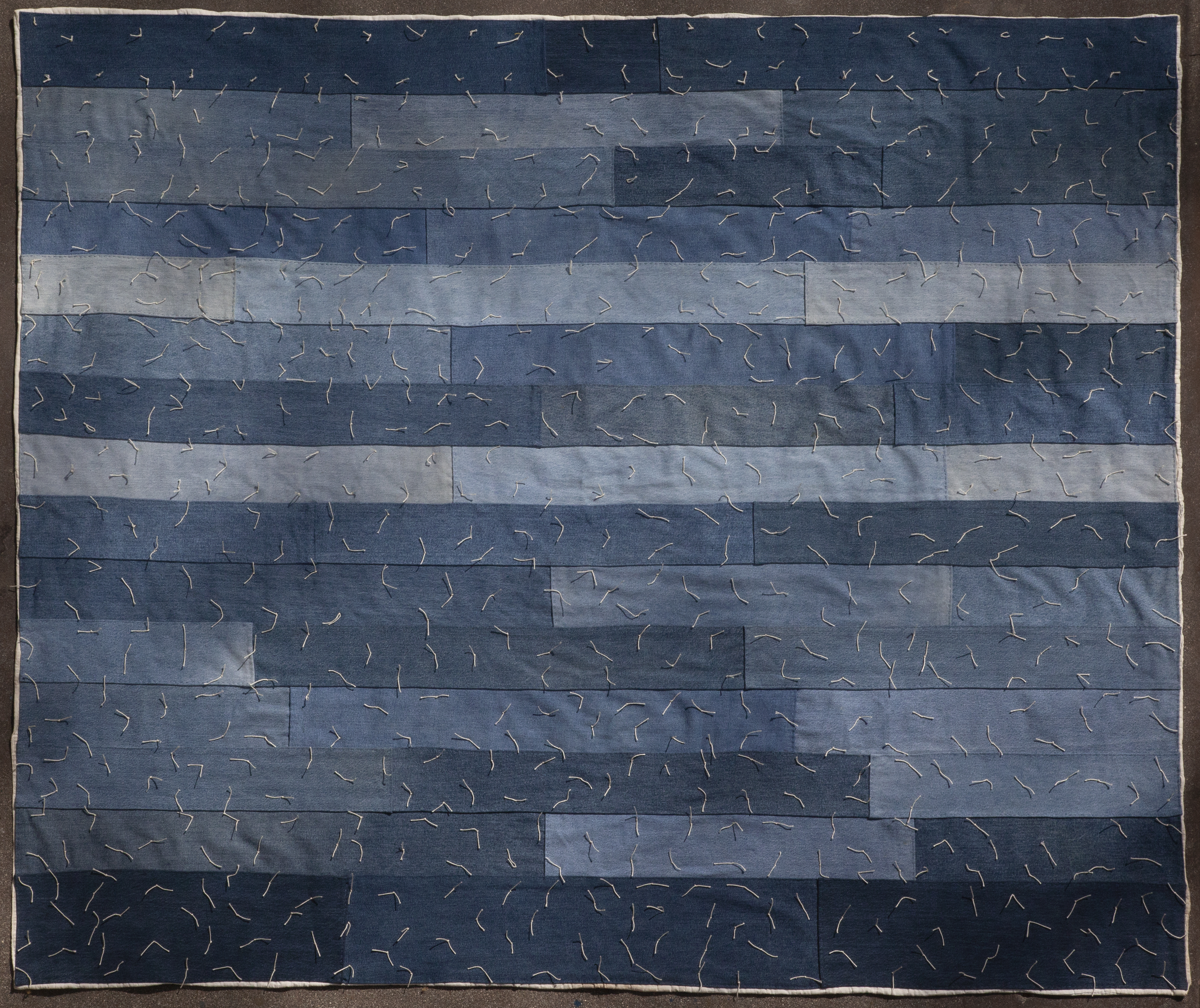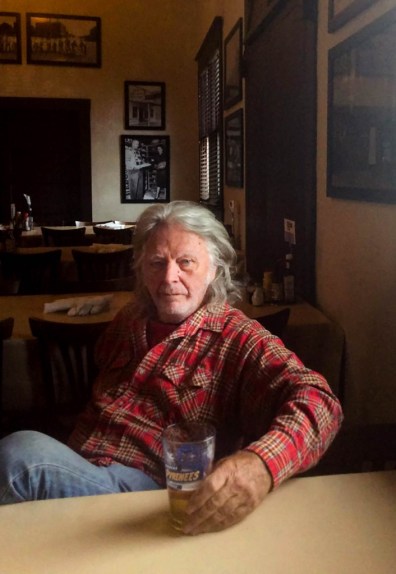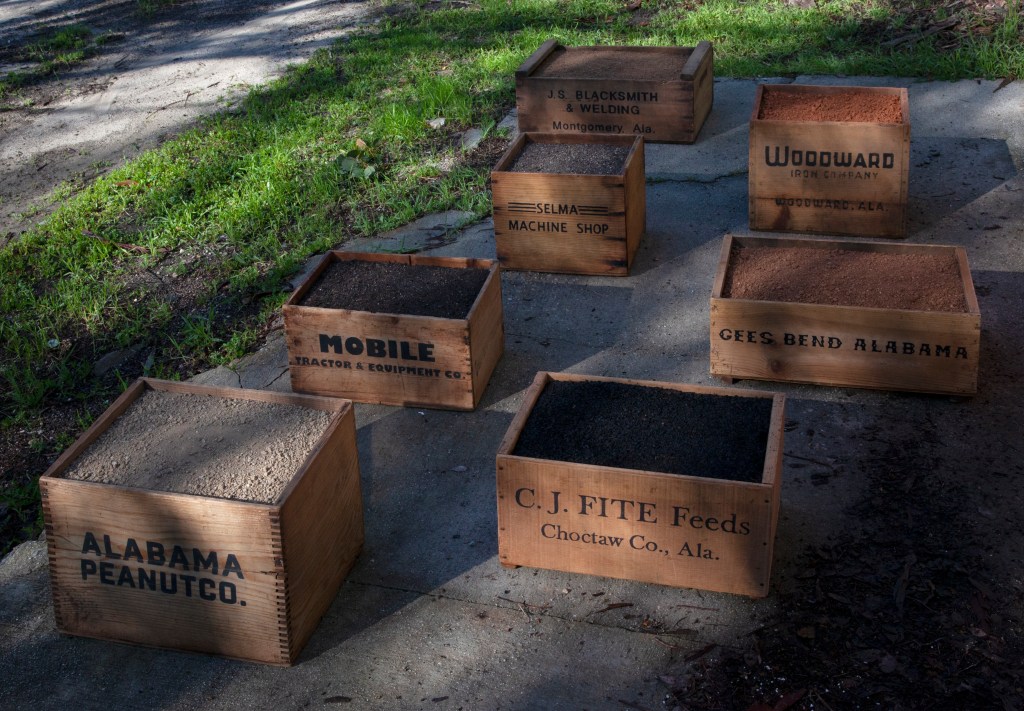James Benning: ‘Quilts, Cigarettes & Dirt’ at MCASB
Artist Presents Idiosyncratic Portraits of America

What is there to say about these idiosyncratic “portraits of America” from the materialist mystic James Benning? The quirky litany of the show’s title, Quilts, Cigarettes & Dirt, arises out of an approach that’s at once transparent — the show really does consist in part of the items listed — and transcendental, in the tradition of the American sublime that stretches back to Walt Whitman and Henry David Thoreau. Benning swims in the same great river of everyday art and democratic culture as Grandma Moses and Walker Evans, picking up images and ideas as he paddles toward the delta of the future. A master of the cinema of the extended gaze, Benning has taken Andy Warhol’s aesthetic strategy of long takes with little or no action out of the Factory and into the fields, highways, and backyards of the American West and South.
Benning is perhaps best known for two cabins he built on the same remote property in the Sierras. One is a replica of Thoreau’s house on Walden Pond; the other copies the layout of Ted “the Unabomber” Kaczynski’s survivalist shack. While film and video make up the bulk of Benning’s oeuvre, he’s always been a deep and free-ranging reader, and a chronicler through his activities of the unique historical circumstances that have made the improbable idea of these United States possible. As evidenced in the subtitle of this exhibit, Portraits of America, this dedication to the unfinished project of America remains central to his vision.

The striking physical design of the show indicates the aesthetic that MCA’s new executive director, Abaseh Mirvali, brings to the organization’s Paseo Nuevo space. It’s a memorable transformation that promises to reveal the gallery’s previously untapped potential. Upon entry, the exhibit’s initial wall text pulls visitors to the left of the main space and down a corridor formed by an L-shaped freestanding wall. Traveling along this entryway, one encounters a series of small, square photos of the cast of Benning’s film Twenty Cigarettes. Guided by a brochure/map, rather than by the standard vinyl labels more frequently encountered in museums and galleries, the viewer walks along two sides of the big room before finally coming into the main space at the other side of the gallery from where he or she entered.
It’s a simple gambit, and an effective one. The main gallery looks different when you reach it this way, and the show’s spare installation lends an eerie dignity to the humble boxes of Alabama dirt and the quilt handstitched from potato sacks that one finds at the outlet of the show’s entry tunnel. In the next room, one of Benning’s recent video works plays on a loop. Depending on the date, these compositions range from the relatively short 2017 video After Warhol, which comes in at a modest 11 minutes and 40 seconds, to the durational grandeur of Twenty Cigarettes (2011), in which 20 people take a total of one hour and 39 minutes to puff through their butts. READERS (2017) takes an hour and 48 minutes to show just four people — Dick Hebdige, Simone Forti, Clara McHale-Ribot, and Rachel Kushner — sitting and reading quietly to themselves for nearly half an hour each.
It takes patience to stand or sit on the floor through these long takes of people reading or smoking silently, but there are multiple rewards for doing so. As with much of Benning’s recent work, some of these dividends are only available to viewers with the cultural knowledge to recognize them. These hidden intellectual Easter eggs tend to ironize themselves even as they add a certain kind of interest. Yes, that’s Rachel Kushner, author of The Flamethrowers and The Mars Room, critically acclaimed recent novels about the New York art scene of the 1970s and the inside of a women’s prison, respectively, but what does it mean to watch her read? Ditto the presence of UCSB’s Dick Hebdige, he of the seminal postmodern critical text Subculture: The Meaning of Style, and of Simone Forti, the choreographer whose work influenced everyone from John Cage to minimalist icon Robert Morris. There’s something there, but what? It’s left up to the viewer to fill in the blanks.

The wooden boxes and the quilts are at once easier to resolve and more timely in their presentation. Benning became interested in quilting after learning about the Gee’s Bend group of African-American artists. He titles his quilts — there are two in the show — with the names of women from the isolated artistic community: ‘After Missouri Pettway’ and ‘After Maggie Louise Gudger,’ both from 2019.
The show’s wooden boxes full of different-colored dirt represent Benning’s interest in and awareness of local differences in soil and in culture throughout the state of Alabama. Having grown up working class in Wisconsin’s Industrial Valley, Benning remains acutely aware of both the persistence of social segregation and the potential for class unity across racial lines. This is a show for repeated visits, and for extended research to meet Benning’s thoughtful and patient extended gaze.
4•1•1 | James Benning’s Quilts, Cigarettes & Dirt shows at MCASB through July 14. There will be an artist talk with Benning at MCASB on Thursday, May 23, at 5 p.m. See mcasantabarbara.org.




You must be logged in to post a comment.